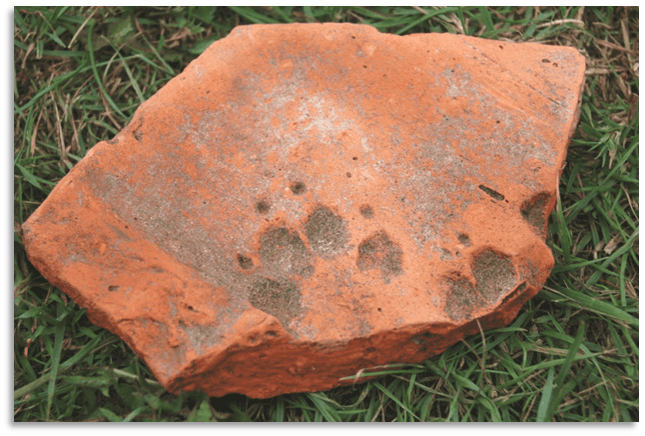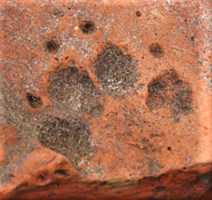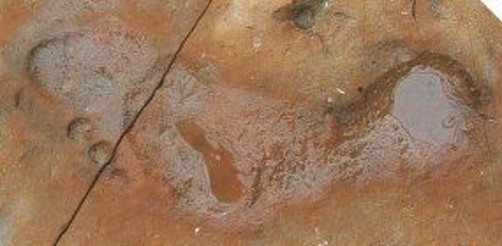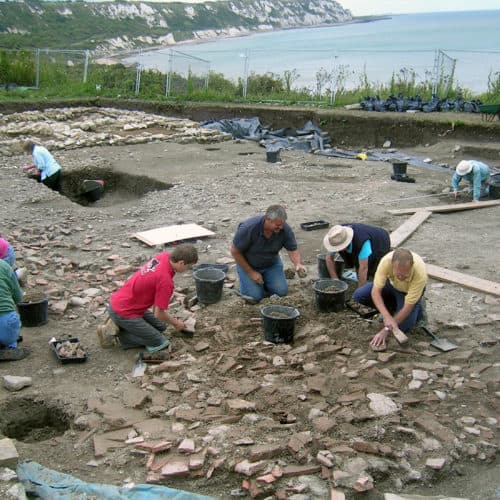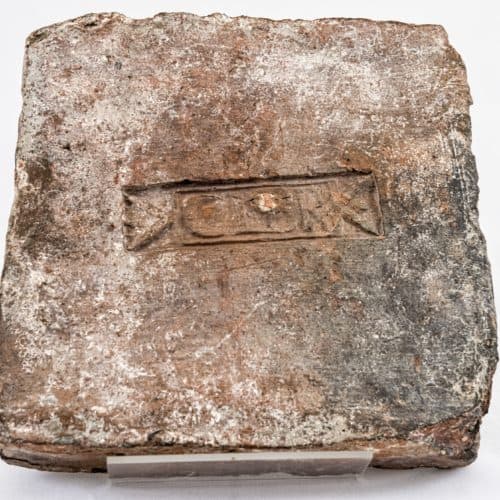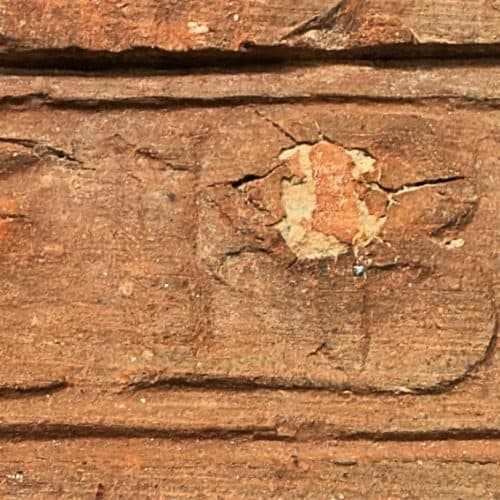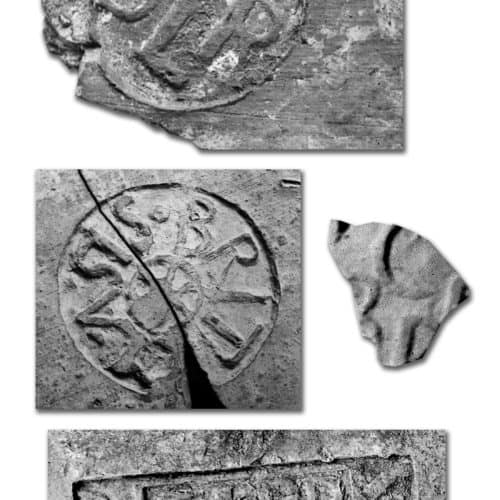Romans 5: tiles
This is a fragment of Roman roof tile with a paw print of a dog on it.
Roman potters left their tiles outside to dry, before they were fired in a kiln. Sometimes animals and people walked across them, leaving footprints.
Do you think the potter was cross when a dog walked across his tiles?
Romans kept dogs and cats as pets like we do today. Dogs were also kept for hunting and as guard dogs.
Copyright: Canterbury Archaeological Trust
This a human footprint!
Did you know?
Footprints of adults, children and hobnail boot impressions (possibly belonging to Roman soldiers) have also been found on Roman tiles.
Image copyright: Canterbury Archaeological Trust
This is a collapsed roof discovered by archaeologists at Folkestone Roman Villa during the 2011-13 dig. Look at how many tiles there are!
The roofs of Roman buildings were made by overlapping flat tegula and curved imbrex tiles.
Image copyright: Canterbury Archaeological Trust
The Romans also used tiles for floors.
This floor tile is stamped with the initials CLBR, an abbreviation of the Latin words CL(ASSIS) BR(ITANNICA).
The Classis Britannica was the British Fleet of Roman ships, based in the English Channel, which helped transport men and supplies to Britain, and defended it in case of attack.
They had forts in Dover and Boulogne, where the marines that crewed their ships lived when on shore.
Tiles made for the forts were stamped CLBR, to identify them and help deter theft.
They have also been found at other Roman sites along the south coast, including at Folkestone Roman Villa.
Was the villa in some way connected to the Classis Britannica? Samuel Wimbolt who excavated the Roman Villa site in the 1920s, and found lots of Classis Britannica tiles, thought the commander may have lived here. However, archaeologists today think CLBR tiles were used for many unrelated buildings. A bit like people buying army surplus items today.
Here’s a CLBR stamp in close-up.
And here are some found by Samuel Wimbolt:
Did you know?
In AD286 a Roman military commander called Carausius was appointed commander of the Classis Britannica with the job of eliminating pirates. Accused of keeping captured pirate treasure for himself, the Emperor Maximilian ordered his execution.
On hearing this news, Carausius declared himself Emperor of Britannia and Gaul, and backed by his men defeated the Roman Rhine fleet in a sea battle and took over the country. He remained in charge of Britain for several years, and even issued his own gold coins.

